Top Influential Chemists Today

Today, the scientific inquiry around chemistry remains essential to improving our way of life through technological innovations, medical breakthroughs, and yet deeper insights into our bodies, minds, and the universe which surrounds us. That covers a lot of ground, which means that, whether you know it or not, the Most Influential People in Chemistry over the last decade (2010-2020) have had a profound impact on your world. These scholars, educators, and famous chemists are responsible for the most important findings, developments, and innovations in chemistry today.
Considering a degree in chemistry? Visit Our Chemistry Page, where you’ll find the best chemistry colleges and universities, career information, interviews with top chemists, influential scholars in the field of chemistry, a history of the discipline, and more.
Chemistry is the study of matter and it’s phases. This physical science explores the properties of matter, the way substances interact, and how energy is created. Chemistry is the study of the elements, compounds, and molecular composition. There is chemistry in everything we do, from cooking and cleaning to driving and digesting our meals.
Chemistry is sometimes referred to as the Central Science because so many of its principles and concepts are foundational to nearly every other basic and applied science. Chemistry lends critical knowledge to the fields of biology, physics, and geology. It informs our understanding of ecology, environmental sciences, mechanical engineering. It is inextricable from the fields of human pathology, genetic research, and astrophysics. Chemistry is, simply stated, a cornerstone of scientific inquiry, discovery, and understanding.
Ironically, chemistry’s origins are in a field best known to modern readers for its dubious efforts at transforming noble metals into gold and concocting a so-called elixir of immortality. The practice of alchemy proliferated widely throughout the ancient world, particularly through Greek and Egyptian influence. At once a philosophy, a spiritual orientation, and a protoscience dedicated to the purification of certain materials, alchemy would ultimately give rise to the true science of chemistry.
In what follows, we look at influential chemists over the last decade. Based on our ranking methodology, these individuals have significantly impacted the academic discipline of chemistry within 2010-2020. Influence can be produced in a variety of ways. Some have had revolutionary ideas, some may have climbed by popularity, but all are academicians primarily working in chemistry. Read more about our methodology.
Note: This isn’t simply a list of the most famous chemists alive today. Here we are focused on the number of citations and web presence of scholars in the last 10 years. There are other highly influential scholars who simply haven’t been cited and talked about as much in the last 10 years, whereas some new faces have been making a splash in the news, speaking events, and publishing, publishing, publishing. Our AI is time sensitive. To find some of the big names you might have expected to see here, we encourage you to use our dynamic ranking system and check influence over the past 20 and 50 years.
Top Influential Chemists 2010-2020
Want more? Discover influential chemists throughout history:Of All Time | Last 50 Years | Last 20 Years | Black Chemists | Women Chemists
Note: The time-specific links above take you to rankings that dynamically change as our AI learns new things!
1.Carolyn Bertozzi
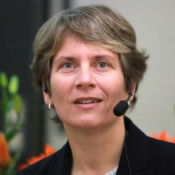
(1966 - )
Boston, Massachusetts, USA
Areas of Specialization: Biorthogonal Chemistry, Glycobiology
Carolyn Bertozzi is the Anne T. and Robert M. Bass Professor in the School of Humanities and Sciences at Stanford University, and is an investigator at the Howard Hughes Medical Institute. She earned a B.A. in chemistry from Harvard University and a Ph.D. from the University of California, Berkeley.
Bertozzi is the founder of biorthogonal chemistry, a subfield of chemistry that allows scientists to modify molecules in living organisms without disrupting processes occurring within the cells. She has also worked extensively to study how viruses can bind to sugars, known as glycobiology. Her work on the interactions of sugar within the body, and diseases such as arthritis, tuberculosis and cancer, have yielded critical insights with implications across medical specialties.
She has also provided important leadership in the field. She is founder or co-founder of companies such as Thios Pharmaceuticals, Redwood Bioscience, Enable Biosciences, Palleon Pharma, InterVenn Biosciences, Grace Science Foundation, OliLux Biosciences and Lycis Therapeutics.
She has over 600 research publications, including “Bioorthogonal Chemistry: Fishing for Selectivity in a Sea of Functionality”, and “Glycans in cancer and inflammation-potential for therapeutics and diagnostics”.
Bertozzi was most recently honored with the John J. Carty Award for the Advancement of Science and the Chemistry for the Future Solvay Prize.
2.Eric Scerri

(1953 - )
Maltese origin
Areas of Specialization: Philosophy of Chemistry, Chemistry Education
Scerri is Lecturer at the University of California, Los Angeles. He is also Founder and Editor-in-Chief of Foundations of Chemistry, a triannual a peer-reviewed academic journal. Scerri is widely acknowledged as an authority on the Periodic Table, appearing in the PBS documentary The Mystery of Matter. He received his bachelor’s of science degree from Westfield College, his MPhil from the University of Southampton and his Ph.D. from King's College London.
Scerri is a chemist but also a noted historian and philosopher of chemistry. In particular, his work on the Periodic Table has crossed disciplines, and he has worked on conceptual problems involving the reduction of chemistry to quantum mechanics (typically considered part of the philosophy of science). In 2015, Scerri was appointed by the International Union of Pure and Applied Chemistry (IUPAC) to make a recommendation on the composition of “Group 3” in the periodic table, selecting the elements that should be included. Scerri’s latest book, published in 2020, is titled The Periodic Table, Its Story and Its Significance. Scerri recently wrote for our Inflection magazine Meyer or Mendeleev: Who really created the periodic table?
3. Ada Yonath

(1939 - )
Jerusalem, Israel
Areas of Specialization: Crystallography
Yonath is Director of the Helen and Milton A. Kimmelman Center for Biomolecular Structure and Assembly of the Weizmann Institute of Science. She received her bachelor’s degree in Chemistry from the Hebrew University of Jerusalem in 1962, her master’s in biochemistry in 1964, and her Ph.D. in Chemistry from the Weizmann Institute of Science in 1968.
Yonath is a crystallographer, a branch of chemistry that studies the arrangement of atoms in crystalline solids. Yonath has applied crystallographic techniques to the study of the ribosome, which has resulted in pioneering research in that area. In 2009, Yonath won the Nobel Prize in Chemistry for her work on the structure and function of the ribosome (along with two colleagues). She became the first Israeli woman ever to win the Nobel Prize.
Yonath has held postdoctoral positions at Carnegie Mellon University and Massachusetts Institute of Technology. She founded the first protein crystallography laboratory in Israel, has been visiting Professor at the University of Chicago, and also directed a Max-Plank Institute Research Unit in Hamburg Germany. In addition to the Nobel Prize, Yonath won the Wolf Prize in Chemistry in 2006, and many other awards during her long and distinguished career.
4. Jean-Pierre Sauvage

(1944 - )
Paris, France
Areas of Specialization: Supramolecular Chemistry, Coordination Chemistry
Sauvage is Director Emeritus of the National Center for Scientific Research (CNRS) in Strasbourg, France. Sauvage received his Ph.D. from Louis Pasteur University (now part of the University of Strasbourg) in 1971. Sauvage was a postdoctoral researcher at the University of Oxford for two years, and taught at the University of Strasbourg as Professor of Chemistry along with his position as Director of Research at CNRS for many years. In 2016, he was awarded the Nobel Prize in Chemistry for his work on molecular machines.
Sauvage’s work focuses on what’s called “supramolecular chemistry,” a subfield that concerns chemical systems with a discrete number of molecules. In particular, Sauvage works on creating molecules that mimic the function of machines, by varying their output depending on inputs. DNA replication and ATP synthesis are performed by similar structures, known as macromolecular machines. Sauvage won the Nobel Prize for providing a key step towards molecular machines when he synthesized two molecules that are interlocked and move mechanically (rather than chemically). Sauvage also performs core research on the processes involved in photosynthesis and reductions of carbon dioxide.
In addition to winning the Nobel Prize, Sauvage was elected a correspondent member of the French Academy of Sciences in 1990.
5. Fraser Stoddart

(1942 - )
Edinburgh, Scotland, United Kingdom
Areas of Specialization: Supramolecular Chemistry, Nanotechnology
Stoddart is Board of Trustees Professor of Chemistry at Northwestern University in the United States. He is also Head of the Stoddart Mechanostereochemistry Group in the Department of Chemistry. Stoddart received his bachelor’s degree as well as his Ph.D. in Chemistry from the University of Edinburgh in 1967.
Stoddart’s research focuses on supramolecular chemistry and nanotechnology. Nanotechnology has entered popular culture because of its exciting possibilities for the fabrication of products at the molecular level, such as materials or miniature devices. Stoddart has performed core research in development on nanotechnologies, including an important class of nanotech known as nanoelectromechanical systems (NEMS).
Stoddart won the Nobel Prize in Chemistry in 2016 for the design of molecular machines, work he shared with colleagues Ben Feringa and Jean-Pierre Sauvage. In 2006, he was appointed Knight Bachelor by Queen Elizabeth II. He received the Albert Einstein World Award of Science in 2007. Stoddart is a Fellow of the Royal Society of London (1994) and is a member of the National Academy of Sciences.
6.Paul Anastas

(1962 - )
Areas of Specialization: Green Chemistry
Anastas is Director of Yale University’s Center for Green Chemistry and Green Engineering. He is known as the “Father of Green Chemistry” for his work on the design and development of safe and environmentally-friendly chemicals. Anastas earned his bachelor’s degree in Chemistry from the University of Massachusetts Boston and his master’s and Ph.D. in Chemistry from Brandeis University.
Anastas is at the forefront of the “green movement” seeking non-hazardous and environmentally friendly chemicals from design to manufacture and use. He coined the term “Green Chemistry,” in fact, and his career dedicated to its research and development has earned him prestigious positions in government and in academia. For instance, Anastas has served as Science Advisor to the US Environmental Protection Agency (EPA) as well as the EPA’s Assistant Administrator for Research and Development, a position appointed by former President Barack Obama. He also served in the White House Office of Science and Technology Policy from 1999-2004. In industry, he co-founded the chemical company P2 Science (2011), and Catalytic Innovations and Inkemia Green Chemicals, both in 2017.
Anastas has published ten books on chemistry, notably Green Chemistry: Theory and Practice, co-authored with chemist John Warner. He has received numerous awards, including the US Environmental Protection Agency Lifetime Achievement Award in 2017, as well as the Green Chemistry Award from the Royal Society of Chemistry, in 2016.
See our Interview with Paul Anastas
7.Omar M. Yaghi

(1965 - )
Amman, Jordan
Areas of Specialization: Reticular Chemistry
Yaghi is the James and Neeltje Tretter Chair Professor of Chemistry at the University of California, Berkeley. Yaghi received his Bachelor of Science degree in Chemistry from the University at Albany, SUNY in 1985, and his Ph.D. in Chemistry from the University of Illinois Urbana-Champaign in 1990. He was then a Postdoctoral Fellow at Harvard University for two years, working with the chemist Richard Holm.
Yaghi is widely considered the pioneer of reticular chemistry, a branch of chemistry concerned with combining molecular building blocks together to synthesize new compounds and materials. Such products have proven beneficial in clean energy technologies such as hydrogen and methane storage.
Yaghi is the second most cited chemist in the world! He has received awards for the design and synthesis of important materials by the American Chemical Society as well as industry giants like Exxon, notably with the Solid State Chemistry Award. The American Association for the Advancement of Science awarded him the Newcomb Cleveland Prize, and he won the Chemistry of Materials Award from the American Chemical Society in 2009. As if these weren’t enough, the World Cultural Council awarded the Albert Einstein World Award of Science. He also received the Wolf Prize in Chemistry in 2018.
8.George C. Schatz
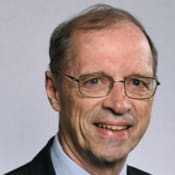
(1949 - )
Areas of Specialization: Reaction Dynamics
George C. Schatz is a theoretical chemist, editor-in-chief at the Journal of Physical Chemistry, and the Morrison Professor of Chemistry at Northwestern University. He earned his B.S. from Clarkson University and his Ph.D. from California Institute of Technology. He completed his post-doctoral work at the Massachusetts Institute of Technology, investigating chemical reaction kinetics.
His research specialty is in the field of reaction dynamics. One of the top theoretical chemists, he has conducted groundbreaking research into the computational modeling of the optical properties of nanoparticles, including how gold and silver nanoparticles absorb light. This work has important clinical implications for the diagnosis of illnesses such as Alzheimer’s Disease, through the use of biosensors.
He credits his success to having had the opportunity to explore multiple fields of inquiry, allowing for a top-down interdisciplinary approach that opens up new possibilities.
Schatz has produced an impressive body of work, with over 900 scientific publications including his book: Introduction to Quantum Mechanics in Chemistry. He has been honored with the Ahmed Zewail Prize, an international award recognizing contributions to Chemical Physics.
He is a member of the International Academy of Quantum Molecular Science and the National Academy of Sciences. His research work today focuses primarily on nanotechnology and bionanotechnology.
See our Interview with George C. Schatz
9.George M. Whitesides

(1939 - )
Louisville, KY, USA
Areas of Specialization: Organic Chemistry, Nuclear Magnetic Resonance Spectroscopy
Whitesides is Woodford L. and Ann A. Flowers University Professor at Harvard University. He received his Bachelor of Arts degree at Harvard College in 1960, and his Ph.D. in Chemistry from the California Institute of Technology in 1964. A prolific researcher, Whitesides earned the highest Hirsch index rating of all living chemists in 2011, an index that attempts to measure the productivity and impact of scholars by analyzing their publications.
Whitesides focuses on organic chemistry, and has performed core research using Nuclear Magnetic Resonance (NMR) spectroscopy, a powerful technique for investigating the nuclei of atoms. Whitesides has also done extensive work on polymers, large molecules with many subparts, at the Massachusetts Institute of Technology (MIT) as well as Harvard University. His recent interests are in physical and organic chemistry, materials science, topics in complexity and emergence, and many other aspects of chemistry and cognate fields. At Harvard, Whitesides is co-founder and director of the (appropriately named) Whitesides Research Group at Harvard. He is also known for his having played a “pivotal role” in the development of the Corey-House-Posner-Whitesides reaction (also known as the Corey-House synthesis, a much more manageable title!), a major development in chemistry. The Corey-House reaction is an organic reaction involving several molecules. It is a powerful tool for synthesizing new complex organic molecules.
Whitesides won the American Chemical Society Award in Pure Chemistry in 1995.
10.Harry B. Gray
(1935 - )
Woodburn, KY, USA
Areas of Specialization: Inorganic Chemistry, Biochemistry, Electron Transfer Chemistry
Gray is the Arnold O. Beckman Professor of Chemistry at California Institute of Technology. Gray received his Bachelor of Science degree in Chemistry from Western Kentucky University in 1957. He earned a Ph.D. in Chemistry from Northwestern University in 1960.
Gray’s research focuses on topics in inorganic chemistry, biochemistry, and biophysics, the latter an exciting discipline that seeks to apply concepts and techniques from physics to biology (as you might expect, biophysics overlaps importantly with chemistry, as well). Gray has focused especially on the dynamics of Electron Transfer (ET) chemistry. He and his group have extensively investigated issues in ET such as how protein radicals accelerate long-range electronic transfer.
Gray was the National Medal of Science in 1986. In addition, Gray received the coveted Priestly Medal in 1991, and the Wolf Prize in Chemistry in 2004. The Wolf Prize recognized his groundbreaking work in the field of bioinorganic chemistry, a subfield dedicated to examining the role of metals in biology. The field includes the study of naturally occurring phenomena such as metalloproteins, as well as artificially introduced metals.
11.Frances Arnold

(1956 - )
Edgewood, Pennsylvania, USA
Areas of Specialization: Chemical Engineering, Biochemistry and Molecular Biophysics, Biochemistry, Chemical Biology, Organic Chemistry
Frances Arnold is the Linus Pauling Professor of Chemical Engineering, Bioengineering, and Biochemistry for the California Institute of Technology. She earned a B.S. in mechanical and aerospace engineering from Princeton University and an M.S. and Ph.D in chemical engineering from the University of California, Berkeley. She earned a Nobel Prize in Chemistry for her discovery of methods of using directed evolution to facilitate enzyme development.
Some of the enzymes she has been able to develop with directed evolution are enzymes to produce environmentally friendly pharmaceuticals and renewable fuels. Other enzymes have evolved to provoke cyclopropanation and nitrene transfer reactions.
In addition to the Nobel Prize, she has also received the honor of being the first woman to be chosen for the National Academy of Medicine, the National Academy of Engineering, and the National Academy of Sciences. She won the Millenium Technology Prize in 2016 and the Raymond and Beverly Sackler Prize in Convergence Research in 2017.
Arnold was Inducted into the National Inventors Hall of Fame in 2014 and became an International fellow of the Royal Academy of Engineering in 2018. Most recently, Pope Francis made her a member of the Pontifical Academy of Sciences, a scientific academy located in the Vatican City.
12.Itamar Willner
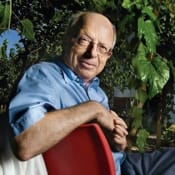
( - )
Areas of Specialization: Nanotechnology, Supramolecular Chemistry
Itamar Willner is a Professor at the Hebrew University of Jerusalem and a chemist. He earned his Ph.D. in physical organic chemistry from the Hebrew University of Jerusalem.
His research interests are broad. He has studied molecular self-assembly, electronics and photophysics of nanoparticles and quantum dots, optobioelectronics, artificial photosynthesis, supramolecular chemistry, nanotechnology, nanobiotechnology, photoinduced electron transfer and more.
He has published more than 700 papers and holds 30 patents. His most recent publications have been Rational Design of Supramolecular Hemin-G-Quadruplex- Dopamine Aptamer Nucleoapzyme Systems with Superior Catalytic Performance and Application of the Hybridization Chain Reaction on Electrodes for the Amplified and Multiplexed Electrochemical Analysis of DNA.
Willner has been honored with numerous prestigious awards, including the Max Planck Research Award for International Cooperation, the Klachky Family Prize for the Advancement of the Frontiers of Science, and was named one of the World’s Most Highly Cited and Influential Scientific Minds in both 2014 and 2015.
He is a member of the Israel Academy of Sciences, the European Academy of Sciences and Arts, the German National Academy of Sciences Leopoldina, and the Royal Society of Chemistry.
His current research group is working on DNA machines for biosensing, biomolecule-based computing, and functional polymers.
13.Jean-Marie Lehn

(1939 - )
Rosheim, France
Areas of Specialization: Organic Chemistry, Supramolecular Chemistry
Lehn is Professor of Chemistry at the University of Strasbourg’s Institute of Advanced Study (USIAS), as well as Chair of Chemistry of Complex Systems. He is also a member of the Reliance Innovation Council of Reliance Industries Limited, India. Lehn studied philosophy and chemistry at the University of Strasbourg, receiving his undergraduate degree in chemistry, and later his Ph.D.
Lehn’s interests are primarily in organic chemistry, where he has explored supramolecular chemistry, or the study of how multiple molecules can lock or combine-in fact, the term “supramolecular” is due to Lehn. His early work focused on synthesizing vitamin B12, and his later investigations led to his discovery of “cryptands,” or cage-like molecules that have a cavity that can house another molecule. Lehn received the Nobel Prize for his groundbreaking work in chemistry in 1987.
Along with the Nobel Prize, Lehn has received a number of prestigious honors and awards during his exciting career. He became a Fellow of the Royal Society in 1993. In 1997, he received the Davy Award, named after 19th century chemist Humphry Davy, for his work in chemistry.
14.Allen J. Bard

(1933 - )
New York, New York, USA
Areas of Specialization: Electrochemistry
Allen J. Bard is a chemist and the Hackerman-Welch Regents Chair Professor and director of the Center for Electrochemistry at the University of Texas at Austin. He studied at the City College of New York before earning a Master’s degree and Ph.D. from Harvard University.
Bard has spent his entire career at the University of Texas at Austin but has served appointments at Cornell University and as the Robert Burns Woodward visiting professor for Harvard University. Known as the “father of modern electrochemistry”, Bard has made substantial contributions to the field. He developed the scanning electrochemical microscope, co-discovered electrochemiluminescence, and made advancements in our understanding of the photoelectrochemistry of semiconductor electrodes.
With more than 1000 research works to his credit, Bard has written three books about electrochemistry. His textbook, Electrochemical Methods - Fundamentals and Applications is known as the standard text on the topic. So much so in fact that students refer to the text as “the Bard.”
At his Center for Electrochemistry, he worked with his colleagues to create light using electrochemistry. This work has been instrumental in the development of new testing and treatment options.
Widely recognized for his work, Bard has been awarded the Wolf Prize in Chemistry, the Priestly Medal, the National Medal of Science, and most recently, the King Faisal International Prize in Chemistry.
15.Thomas Maschmeyer

(1966 - )
Areas of Specialization: Catalysis, Sustainable Processes, Green Chemistry
Maschmeyer is Professor of Chemistry at the University of Sydney, Australia. He is also Founding Director of the Australian Institute for Nanoscale Science and Technology. Maschmeyer is known for his research on catalysis, sustainable processes, and renewable feedstocks (biomass, solar, and hydrogen). In addition, he also performs research on important areas such as nanostructured materials and reversible energy storage devices.
Maschmeyer has authored numerous articles and several books. He was elected Fellow of the Royal Society of New South Wales. In 2011 he was elected Fellow of the Australian Academy of Science.
16.Lesley Yellowlees

(1953 - )
London, England, UK
Areas of Specialization: Inorganic Electrochemistry, Solar Cell Chemistry
Yellowlees is Professor of Inorganic Electrochemistry at the University of Edinburgh, Scotland. She is the first woman elected to head of chemistry at Edinburgh. She is also Head of the College of Science and Engineering. Yellowlees received her bachelor’s degree (BsC) in Chemical Physics at the University of Edinburgh in 1975, and finished her Ph.D. in Inorganic Electrochemistry at Edinburgh in 1982.
Yellowlees’ career has focused on important areas of inorganic chemistry, including work on solar cell chemistry and electrochemical research. She became a Fellow of the Royal Society of Chemistry in 2005 as well as an Honorary Fellow of the Royal Society of Chemistry in 2015. In 2014, she was included in the BBC’s 100 Women, a series highlighting the role of women in the 21st century.
17.Ben Feringa

(1951 - )
Barger-Compascuum, Netherlands
Areas of Specialization: Materials Science, Nanotechnology, Photochemistry
Feringa is Jacobus van ’t Hoff Distinguished Professor of Molecular Sciences at the Stratingh Institute for Chemistry, the University of Groningen, Netherlands. He is also Academy Professor and Chair of Board of the Science Division of the Royal Netherlands Academy of Sciences. Feringa shares the 2016 Nobel Prize in Chemistry with Stoddart and Sauvage (listed earlier) for work on molecular machines.
Feringa has a master’s in science (MSc) in Chemistry from the University of Groningen in 1974. He received his Ph.D. in Chemistry from Groningen in 1978. Feringa’s work on photochemistry has led to important advances in light-driven molecular motors. The first nanocar-a molecular “vehicle” driven by light impulses-resulted from Feringa’s important work in chemistry. Feringa’s discovery was selected by the Chinese Academy of Sciences as one of the 10 major discoveries in science in the world.
Feringa holds over 30 patents and has written over 650 papers! Feringa is a member of the Royal Society of Chemistry, a Foreign Honorary Member of the American Academy of Arts and Sciences, and the Royal Netherlands Academy of Sciences.
18.Robert H. Grubbs

(1942- )
Possum Trot, KY, USA
Areas of Specialization: Organometallic chemistry
Grubbs is the Victor and Elizabeth Atkins Professor of Chemistry at the California Institute of Technology (Caltech). He received his bachelor of science in Chemistry at the University of Florida in 1963. He received his master’s degree from Florida in 1965. Grubbs got his Ph.D. in Chemistry from Columbia University in New York City in 1968.
Grubbs’s work in Chemistry has focused on organometallic chemistry, a relatively new field at the time of his initial research efforts in the late 1960s. He is also a specialist in synthetic chemistry, an exciting field that studies the structure, properties, and reactions of organic compounds. His work has important application for the creation of polymers, pharmaceuticals, and petrochemicals. He is known for developing a family of catalysts, one of which bears his name: the Grubbs catalyst.
Grubbs won the Nobel Prize in Chemistry in 2005, along with Richard R. Schrock and Yves Chauvin. In addition, Grubbs became a member of the National Academy of Sciences in 1989 and the American Academy of Arts and Sciences in 1994. In 2009, he became Fellow of the American Chemical Society.
19.Gregory D. Scholes

(- )
Areas of Specialization: Photosynthesis, Quantum biology
Gregory D. Scholes is the William S. Tod Professor of Chemistry at Princeton University and Deputy Editor for the Journal of Physical Chemistry Letters. He studied at Imperial College London and University of California, Berkeley.
With the Scholes Group, he studies photobiomodulation medicine, solar energy conversion, excitonic materials, and photosynthesis. They have also recently been using coherence spectroscopies to investigate the characteristics of coherence phenomena.
His current research interests include the study of how chemical systems may behave with unexpected quantum information, the use of short laser pulses to drive coherent states and reveal ultrafast processes. He is also studying light-induced functions of photosynthetic proteins and nanoscale systems.
In addition to his teaching and scientific research endeavors, Scholes is also an adjunct professor at the Beijing Institute of Technology and the Director of the Energy Frontier Research Center BioLEC (Bio-inspired Light-Escalated Chemistry). He is also a senior fellow for the Canadian Institute for Advanced Research.
He has contributed to a number of important research works in his field, including “Coherently wired light-harvesting in photosynthetic marine algae at ambient temperature”, “Lessons from nature about solar light harvesting”, and “Light absorption and energy transfer in the antenna complexes of photosynthetic organisms”.
20.Robert Curl

(1933 - 2022)
Alice, Texas, USA
Areas of Specialization: Buckminsterfullerene
Curl, who passed away July 3, 2022, was the Pitzer-Schlumberger Professor of Natural Sciences Emeritus, and Professor of Chemistry Emeritus at Rice University. Curl received his Bachelor of Science degree from Rice University (then the Rice Institute) in 1954. He got his Ph.D. in Chemistry from the University of California, Berkeley in 1957. Curl won the Nobel Prize in Chemistry in 1996 for his groundbreaking work on nanomaterials.
Curl’s research, especially his earlier work, focused on the use of microwave spectroscopy to analyze chemical compounds. This work led to his analysis of free radicals, an important area touching on many applications. Later, Curl analyzed large carbon chains occurring in red giant stars, work that led to his groundbreaking discovery of buckminsterfullerene, named after the structures created by architect Buckminster Fuller. His discovery has spurred interest in nanomaterials as well as molecular scale electronics. In later years Curl has worked on physical chemistry, including DNA sequencing, as well as exciting new technologies like quantum cascade lasers, semiconductor lasers that emit in the infrared part of the electromagnetic spectrum.
In addition to his Nobel Prize in Chemistry (which he shared with chemists Richard Smalley of Rice University and Harold Kroto of the University of Sussex), Curl was the recipient of many awards and distinctions for his outstanding work in Chemistry. He became Fellow of the National Academy of Sciences in 1997, and Fellow of the American Academy of Arts and Sciences in 1998. Curl won the International Prize for New Materials from the American Physical Society in 1992.
In 2001, he was elected an Honorary Fellow of the Royal Society of New Zealand. His work was recognized as National Historic Chemical Landmark of the American Chemical Society in 2010, an honor bestowed for research that represents a significant landmark in the field of Chemistry.
See our Interview with Robert Curl
21.Robert Bergman
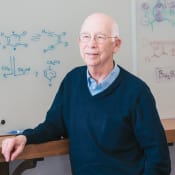
(1942 - )
Chicago, Illinois, USA
Areas of Specialization: Green Chemistry
Robert Bergman is the Gerald E. K. Branch Professor of Chemistry at the University of California, Berkeley and a researcher at the Lawrence Berkeley National Laboratory. He earned a bachelor’s degree in chemistry from Carleton College and a Ph.D. from the University of Wisconsin–Madison. He completed his post-doctoral research at Columbia University.
Bergman’s work in organic chemistry has yielded important insights into the thermal cyclization of cis-1, 5-hexadiyne-3-ene to 4, 4-dehydrobenzene diradicals - a process which is now known as Bergman cyclization. He has also studied the synthesis of organometallic compounds and their reactions to transition metals such as metal-oxygen and metal-nitrogen.
Bergman’s work began gaining attention and recognition before he even graduated, receiving a Camille and Henry Dreyfus Foundation Teacher-Scholar Award. He has received a number of awards for his work, including the American Chemical Society’s Award in Organometallic Chemistry, the Arthur C. Cope Award, a National Institutes of Health Merit Award, the James Flack Norris Award in Physical Organic Chemistry and a Wolf Prize in Chemistry.
He is a member of the National Academy of Sciences, the American Academy of Arts and Sciences, the California Academy of Sciences and the American Association for the Advancement of Science.
22.Martyn Poliakoff
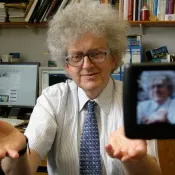
(1947 - )
London, England, UK
Areas of Specialization: Green Chemistry
Martyn Poliakoff is a research professor in the chemistry department at the University of Nottingham. He attended Westminster School before earning a bachelor’s degree and Ph.D. from King’s College in Cambridge.
Best known for his video series, The Periodic Table of Videos, Poliakoff is a leading researcher in green chemistry, with a particular focus on supercritical fluids. His video series features more than 600 videos discussing the various elements of the periodic table, and more recently, molecules and other chemistry topics.
He has received numerous honors in the field, including the Meldola Medal and Prize and the Nyholm Prize. He is a fellow of the Royal Society, the Royal Society of Chemistry, the Institution of Chemical Engineers, and a foreign member of the Russian Academy of Sciences. He was named an Associate Fellow of the Ethiopian Academy of Sciences.
In 2008, he was appointed Commander of the Order of the British Empire for his substantial contributions to the field of chemistry. Most recently, he was honored with the Royal Society of London Michael Faraday Prize and the Longstaff Prize.
He has provided critical leadership as well, serving in leadership positions for the Royal Society and through his work with the Advisory Council for the Campaign for Science and Engineering.
23.Charles M. Lieber

(1959 - )
Philadelphia, Pennsylvania, USA
Areas of Specialization: Nanoscience, Nanotechnoogy
Charles M. Lieber is co-founder of Nanosys and Vista Therapeutics, a pioneer in nanoscience and nanotechnology and a chemist. He earned a B.A. in chemistry from Franklin & Marshall College before earning his Ph.D. from Stanford University. He completed a two-year postdoctoral program at Caltech, where he studied long-distance electron transfer in metalloproteins.
Lieber has made critically important contributions to our understanding of nanomaterials, rational growth and synthesis. His nanoscience work has had applications in fields such biology, medicine, computing and electronics, among others.
He has most recently been working on integrations between nanoelectronics and brain science. For this research he works to map activity within the brain and to study how electronics could be non-invasively integrated with the central nervous system.
He has been widely recognized for his work. He has been the recipient of the Wolf Prize in Chemistry and Nano Research Award, the NIH Director’s Pioneer Award and the Welch Award in Chemistry.
In recent days, Lieber is facing significant professional challenges. He was arrested by the federal government and charged with making false statements regarding his work with China’s Thousand Talent Program, which is affiliated with the controversial Wuhan University of Technology. He has been placed on leave by Harvard University until the situation resolves.
24.Martin Karplus

(1930 - )
Vienna, Austria
Areas of Specialization: Protein and Nucleic Acids, Solution Dynamics and Thermodynamics
Karplus is Theodore William Richards Professor of Chemistry, emeritus at Harvard University. He received his Bachelor of Arts (AB) degree from Harvard University in 1950, and his Ph.D. in Chemistry at the California Institute of Technology (Caltech) in 1953, working with the famous Nobel laureate Linus Pauling. Karplus is also currently the Director of the Biophysical Chemistry Laboratory, a joint laboratory between the French National Center for Scientific Research and the University of Strasbourg, France.
Karplus is a theoretical chemist. His interests include fields in physical chemistry, including chemical and quantum chemistry. Importantly, he also works on molecular dynamics simulations of biological macromolecules, an area that uses computation to analyze the movements of atoms and molecules. He is known for the eponymous Karplus equation, which correlates forces at the atomic level.
Karplus is the author of several books, including the much read Atoms and Molecules: An Introduction for Students of Physical Chemistry (with Richard N. Porter). He was elected a member of the National Academy of Sciences in 1967. He received the Linus Pauling Award in 2004. He won no less than the Nobel Prize in Chemistry in 2013.
25.Peter G. Schultz
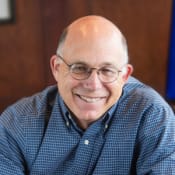
(1956 - )
Cincinnati, Ohio, USA
Areas of Specialization: Biological Chemistry, Interface of Biology, Chemistry, and Materials Science
Schultz is the CEO and Professor of Chemistry at The Scripps Research Institute. He is also founder and former director of the Genomics Institute of the Novartis Research Foundation (GNF). In 2012, he founded the California Institute for Biomedical Research (Calibr), and now serves as its director. Academically, Schultz received his undergraduate degree from the California Institute of Technology (Caltech) in 1979 and his Ph.D. in Chemistry at California Institute of Technology in 1984.
Schultz has had a stellar career in chemistry both in academia and in scientific institutes like the vaunted Lawrence Berkeley National Laboratory, which he joined as a Principal Investigator in 1985. He has also been a professor of Chemistry at the University of California, Berkeley, and spent a year in Chemistry at the Massachusetts Institute of Technology (MIT). In 1994, he became an investigator with the Howard Hughes Medical Institute. Schultz has trained over 300 graduate students and postdoctoral fellows!
Schultz is a pioneer in what’s called “combinatorial chemistry,” where large numbers of compounds are compared in a single process, potentially speeding up discovery and verification of hypotheses. His work has sometimes been called “high-throughput” chemistry, referring to the advantages of using combinatorial methods in chemical analysis. Schultz’s interests are wide-ranging, and reach even investigation of cell-specialization and other areas typically thought of as part of biology. He is also known for developing DNA libraries, or phage display libraries, which have been used extensively in research and in industry. Schultz became a member of the National Academy of Sciences in the US in 1993. In 2006, he won the American Chemical Society’s Arthur C. Cope Award.
Honorable Mentions in Chemistry
- Elias James Corey, Harvard University
- Roald Hoffman, Cornell University
- Sumio Iijima, Meijo University
- David Leigh, University of Manchester, England
- Michael Levitt, Stanford University
- Tobin J. Marks, Northwestern University
- Ei Ichi Negishi, Purdue University
- Larry E. Overman, University of California at Irvine
- Atta Ur Rahman, University of Karachi
- Carol V. Robinson, University of Oxford
- Reiner Salzer, TU Dresden
- Akira Suzuki, National Cheng Kung University
- Akira Yoshino, Meijo University of Nagoya